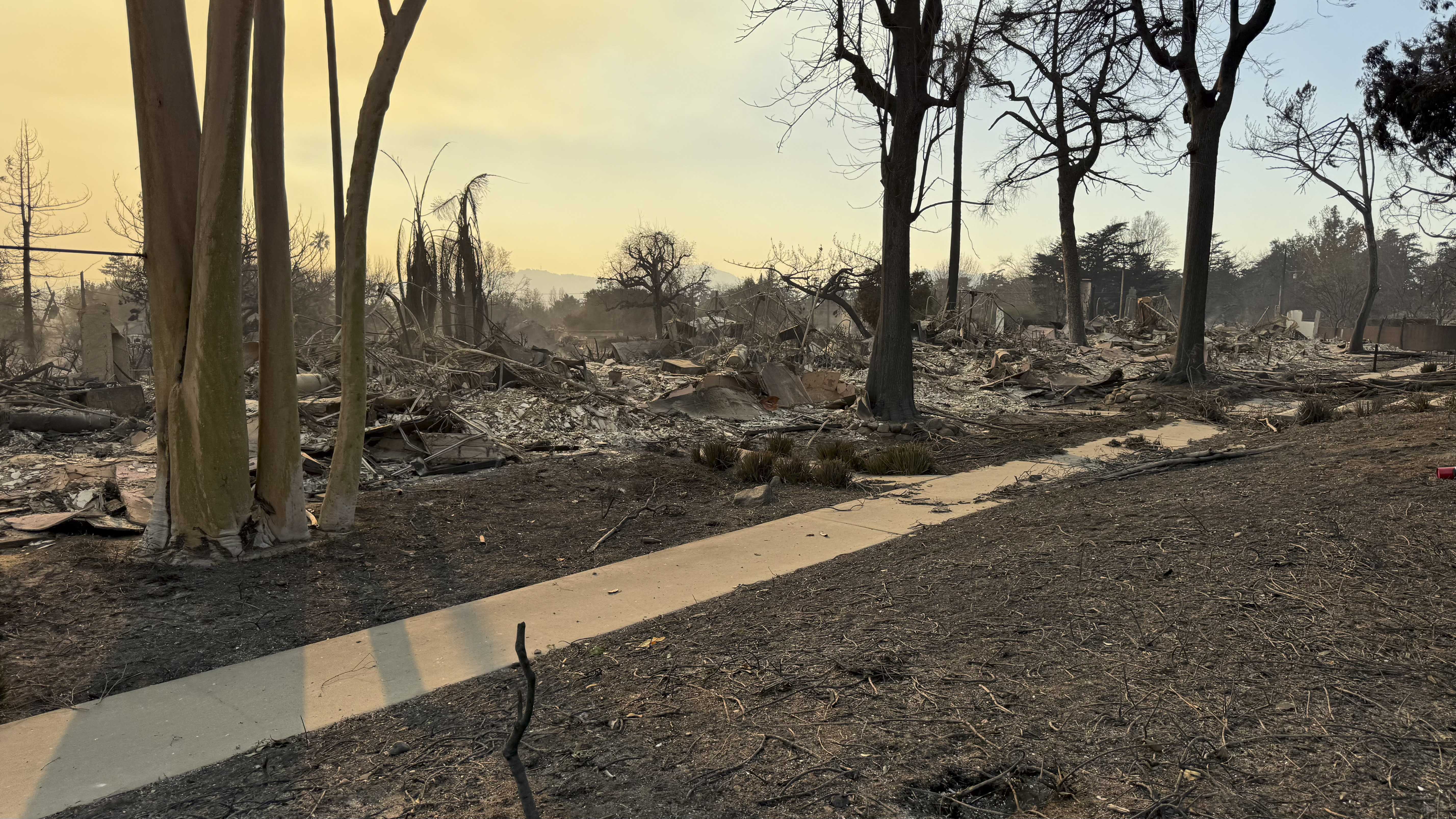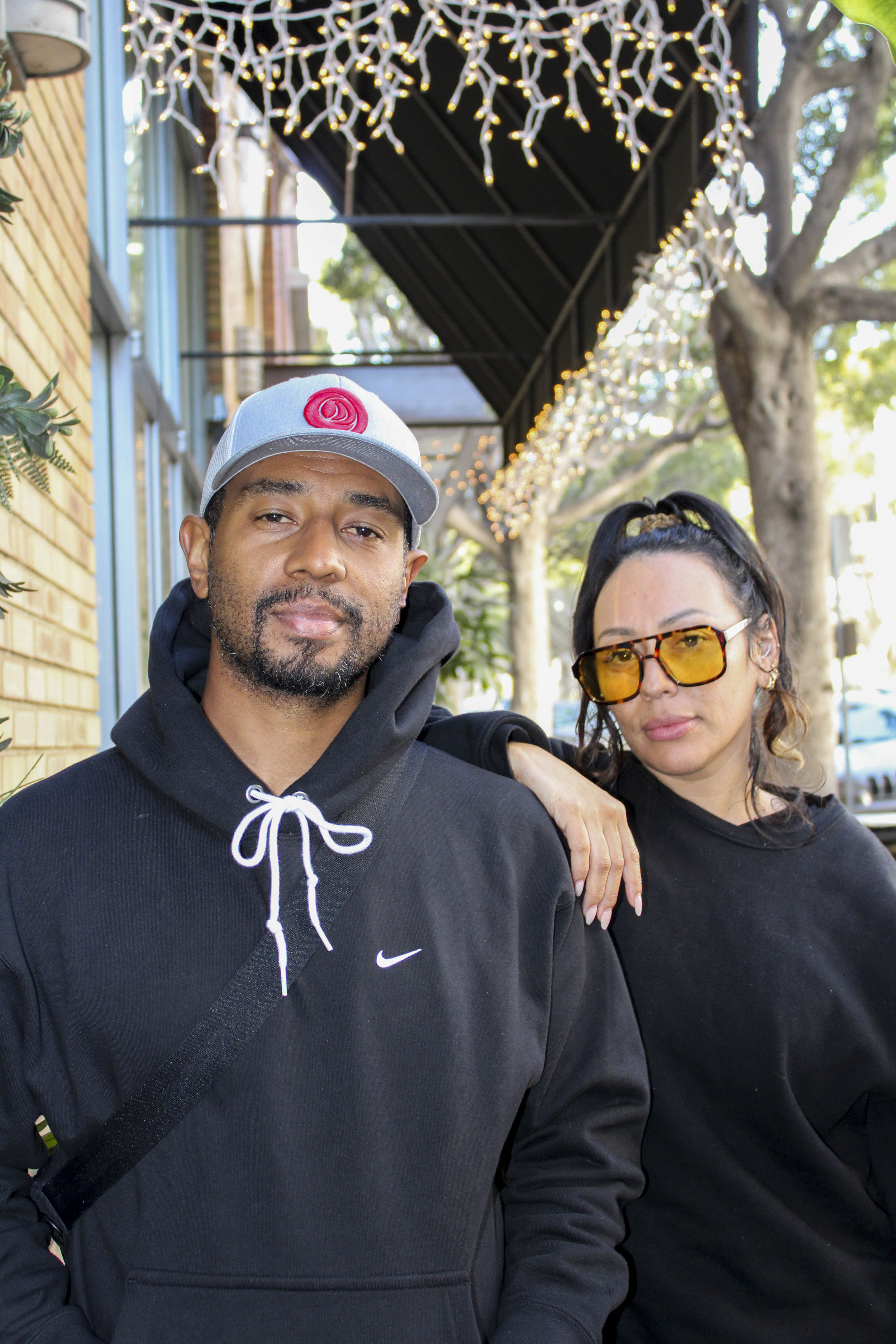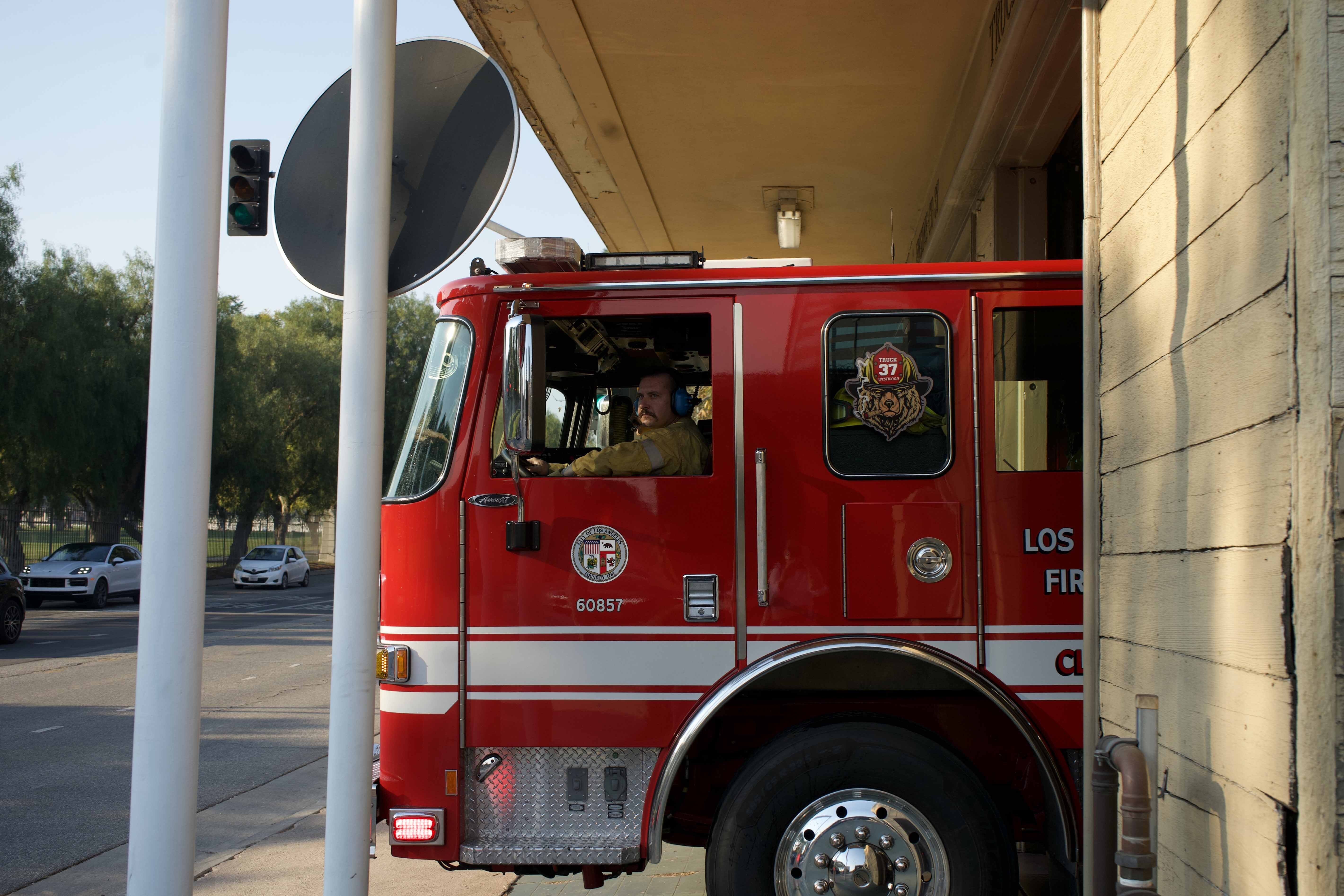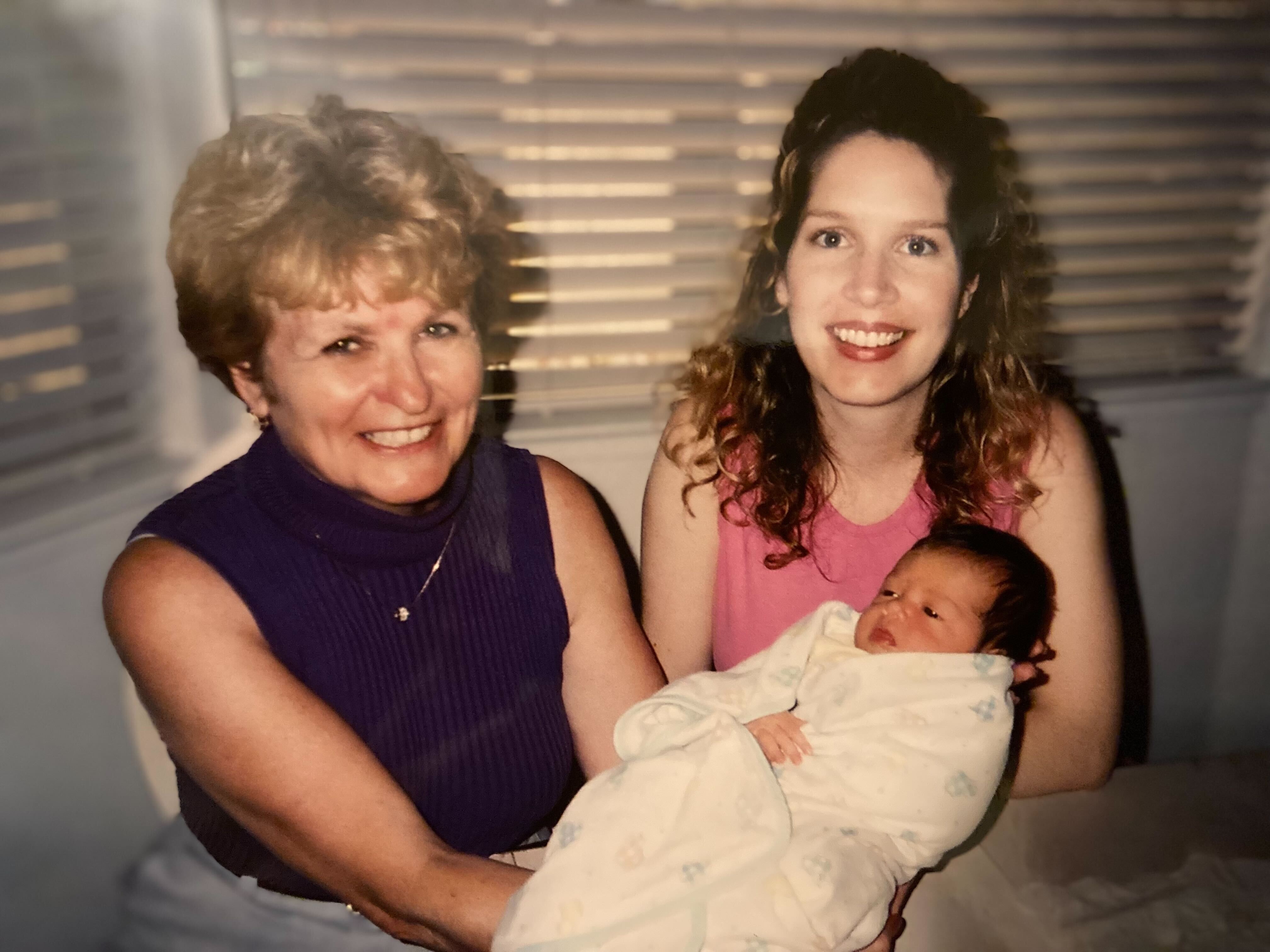Opinion: Tracing Altadena’s uncertain road to recovery following Eaton fire

Derek Russell Jr. stands in front of the rubble of his family home after it burned down in the Eaton fire. (Courtesy of Derek Russell Jr.)

By Tavian Williams
Feb. 6, 2025 11:40 p.m.
On Wednesday, Jan. 8, I watched as an orange glow miles away grew, smoke clouding the midnight sky outside my dorm window. The wildfires felt distant – a familiar scene growing up in California. But that detachment shattered when my brother called me later that afternoon.
My aunt and cousin’s house caught fire in Altadena.
Hours later, I texted my cousin. Her response came swiftly: “Our house is gone.”
When the flames die down and news cameras move on to other stories, the lives of those who lost everything don’t dim as easily. Their grief and struggle to rebuild linger long after the headlines pass.
Altadena, an unincorporated community north of Pasadena, embodies the zeitgeist of Black middle-class resilience in the face of systemic barriers.
Most suburbs in Los Angeles used redlining tactics to prevent African Americans from moving into predominantly white neighborhoods in the 1950s. Altadena was one of a few communities with more lenient housing restrictions that allowed Black homeownership.
Altadena’s Black population stood at 43% in 1980, gaining recognition as one of the oldest and most affluent Black middle-class neighborhoods in the state. Before the Eaton fire, however, gentrification had shrunk Altadena’s Black population to around 18%.
Derek Russell Jr. and Victoria Barrera, two friends, grew up around the Altadena area. After the Eaton fire, they acted as pillars for one another in their shared mourning, a dynamic fostered within Altadena’s culture of resilience.
When I first met them in a Pasadena coffee shop a week after the fire hit Altadena, they were on the phone with the Federal Emergency Management Agency, seemingly frustrated by bureaucratic protocol and limited resources. After waiting five days just to speak with an employee, they were told they would have to wait an additional seven to 10 business days for an official to confirm their home had actually burnt down before receiving any aid.

“I’m just frustrated with the waiting,” Russell said. “Not me, but everyone else wants answers now, like ‘When are you turning my power back on? When are you turning my water back on?’”
Their experience mirrored the delays and disparities seen in past disasters, such as Hurricane Katrina. Black Americans receive disproportionately less recovery funding on average after natural disasters compared to their wealthier white counterparts, according to a report from the Harvard Kennedy School’s Student Policy Review.
After the call ended, Barrera wept.
“This is not only loss – this is deeper than that,” she said. “These are generations and generations that have been infused with love.”
Barrera shifted between tears, frustration and moments of lighthearted laughter while describing the community she cultivated, breaking bread with neighbors and residents of Altadena who became her extended family. Despite her grief, her generous spirit of community never wavered.
Barrera’s daughter lost her school to the Eaton fire. Only six students in her daughter’s elementary school class of 20 students had a home to return to after the disaster.
“One of the major things right now that is at the top for me and my daughter is making sure that we have those essentials – a place where she can lay her head or a place where she feels safe,” Barrera said.
Russell’s grief was compounded by another loss. His father, who lived with him, died a month before the fire.
“Buried him on Dec. 6, 2024, and Jan. 8, I left my house thinking I was coming back, knowing I was coming back, and on Jan. 9 – home no more,” Russell said.
Russell put off sorting through his father’s belongings after he died. He could picture every corner of the house – the bedroom his father once slept in, the armchair where he always sat.
He wished he hadn’t waited.
“My dad’s badge from when he retired, my grandfather’s flag from when he passed away in the military was in there,” Russell said. “Those things I can’t get back. Those things are completely gone.”

Russell and Barrera had only hours to grab their essentials and evacuate.
Firefighters battled the relentless flames that tore through Altadena – destruction that, despite their best efforts, was impossible to contain. Among them, the San Marino Fire Department fought tirelessly with limited resources, risking everything to protect what remained.
Mark Dondanville, fire division chief of the SMFD, and Michael White, a fire engineer who served as fire captain when the Eaton fire ignited, described how rapidly the fire spread.
“You had the 70-mile-an-hour winds pushing a fire,” White said. “We just couldn’t catch the fire with the amount of resources. We had one fire engine for five or six houses, and then one house would catch fire, and it would spread fire a couple blocks down.”
Located about six miles from Altadena, firefighters from SMFD drove one of six nearby fire engines dispatched to fight the fire.
Dondanville recalled the difficult reality of having to pass burning homes and businesses due to limited resources. The fire engulfed Altadena with devastating speed, leaving entire neighborhoods unrecognizable.
“Our job is to protect life and property, and we couldn’t that night,” Dondanville said. “And that’s the frustrating thing for us – it gets emotional to us.”
With the flames contained, the weight of loss remains. Beyond LA’s glamorous facade, thousands of families whose entire net worth was tied to their homes – some living paycheck to paycheck, some without homeowners insurance – face an uncertain future.
But for Barrera, rebuilding is not just about homes. It’s about holding on to a history, a community and a way of life that refuses to be erased.
“We will prevail,” Barrera said. “Just like a rose that grows from the concrete, we will rebuild, and we stand strong together.”





